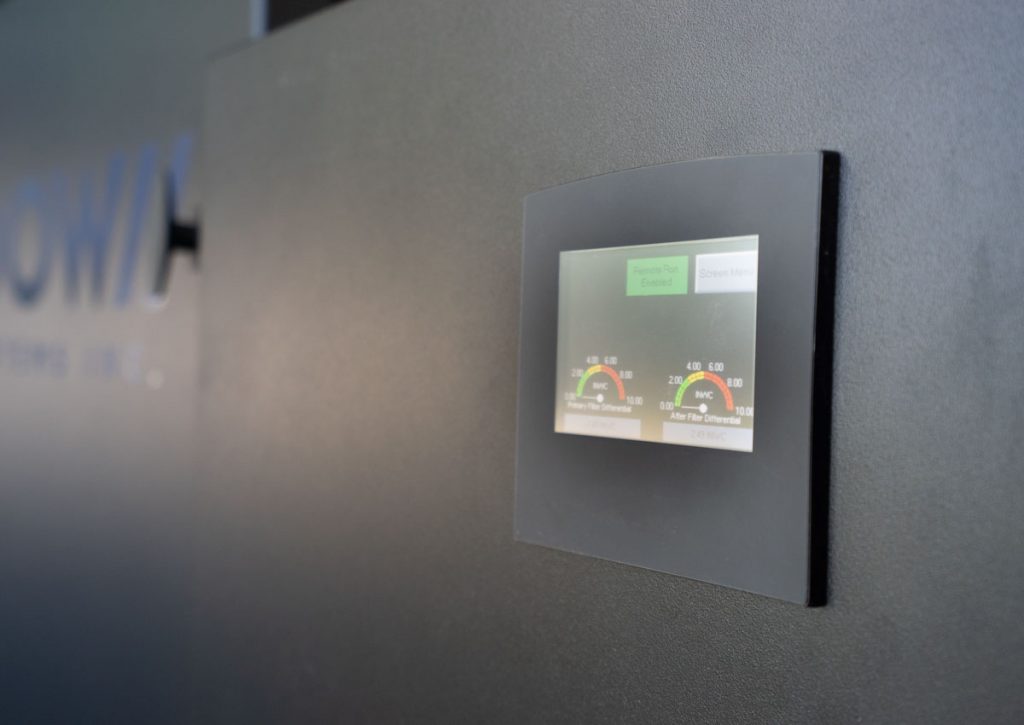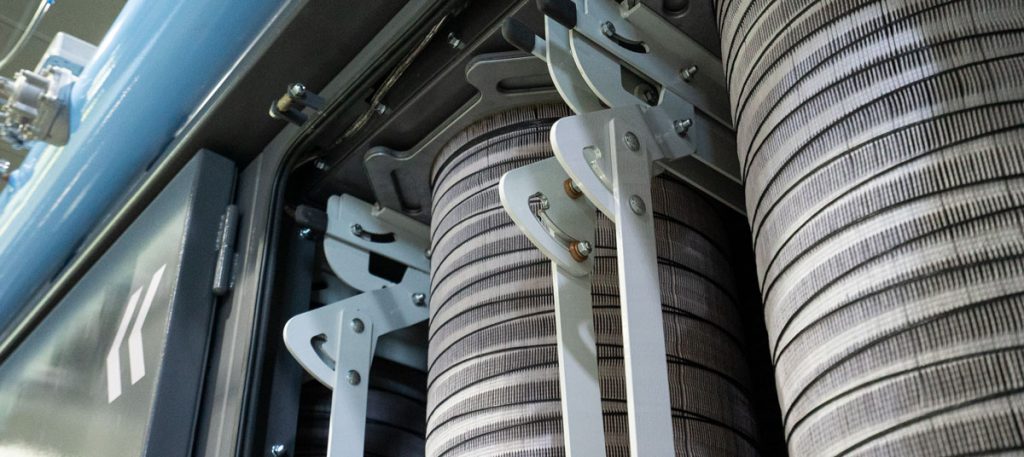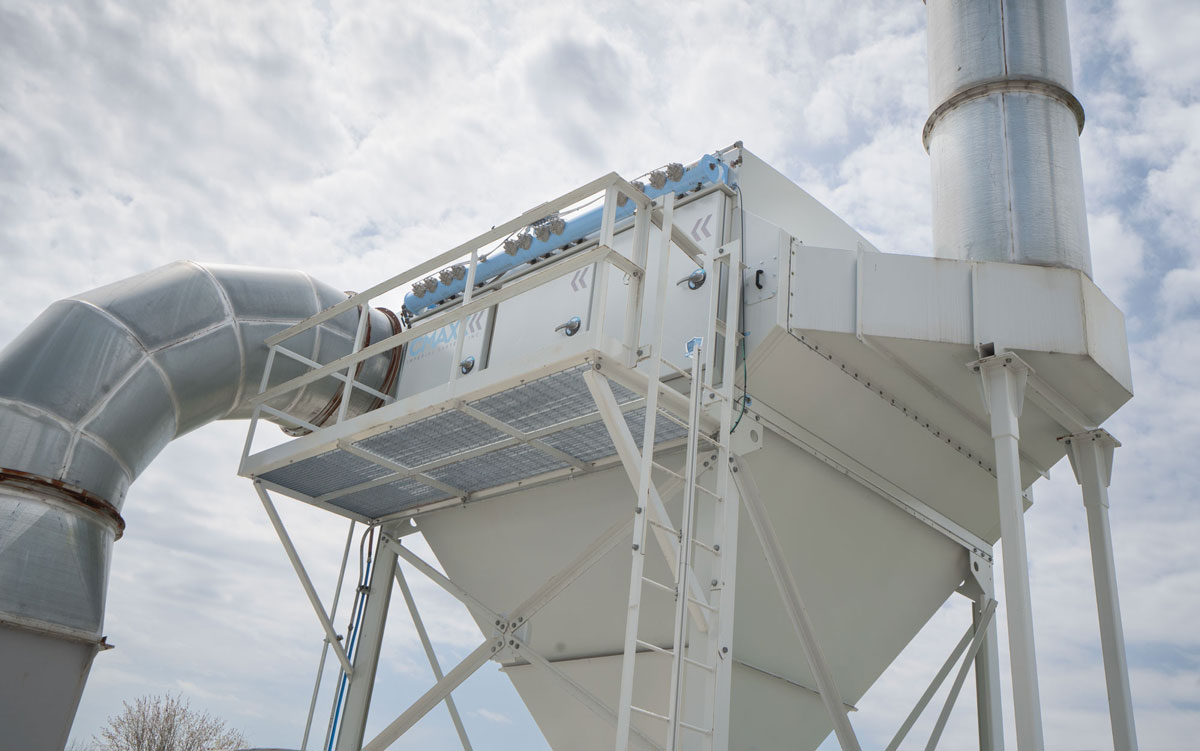Whether your dust collector is brand new or has been in service for years, you may be noticing problems with it. Troubleshooting operational issues can be difficult. It could be that the system is undersized, due either to improper initial design or subsequent modification. But how do you know? Here are seven indicators that you may have an undersized dust collector in operation.
Air-to-Cloth Ratio
It is important to size the collector with the correct air-to-cloth ratio. In general, you want to select the lowest air-to-cloth ratio possible. That’s because a low ratio provides more filter media area for the selected air volume. As a result, more media means lower dust loading on the media, lower differential pressure, and longer filter life.
High air-to-cloth forces a heavier dust loading onto the filter media. This can lead to shorter filter life and high differential pressure. A high ratio can result in a rapid buildup of dust on the filters. This embeds the dust particles in the media and clogs the filters. Consequently, the collector will work harder than it should.
Selecting the right air-to-cloth ratio is an essential step in determining the proper collector size. Sizing the ratio too low can result in a larger and more costly dust collector than the application requires. Sizing the ratio too high can result in an undersized collector with poor efficiency and high maintenance and operation costs.
Differential Pressure Gauge Readings
One of the easiest indicators of an undersized collector is to monitor the dust collector’s differential pressure. Does the differential pressure rise too rapidly? Does the differential pressure remain high during the collector’s pulse cleaning cycle?
Persistent high differential pressure readings or a differential pressure that will not drop during the filter pulse cleaning cycles is an early warning that your collector may be undersized. However, other factors unrelated to the size of the collector can cause high pressure readings. For example, it can be a faulty pressure gauge or simply a clogged vacuum line causing a false reading.
Filter Life / Filter Failure
Short filter life is a more accurate indicator of an undersized collector. Filter life will vary depending on many factors. These may include the type of collected dust particulate and the hours of dust collector operation. It may also involve how much downtime is allowed for filters to “rest,” and the effectiveness of the pulse cleaning system, to name a few.

In general, the average life expediency of a cartridge filter should be a year or longer. In some extreme applications, filters may need replacing on a 6 to 9-month cycle. Filters failing or needing monthly replacement are indicators the collector is handling more dust materials than it was sized for.
Loss of Air Flow
The dust system may experience a loss of airflow or suction at the hoods. If so, heavy dust loading on the filters can cause this. This is an indicator that the system is working too hard and is undersized for the application.
Dust Backing Up in the Collector Hopper
Emptying collector dust multiple times during a work shift could indicate an undersized system. This could be dust that backs up into the hopper or dust storage at the unit’s discharge. Both are strong signs that the system is handling more dust than it was sized for.
Dust backing up in the hopper is a serious concern. That’s because it can get high enough to cover and blind the filter elements.
Fan Performance
Poor fan performance can be an indicator of an undersized system. As the filters rapidly load with dust, the total system static pressure builds, which can affect the fan performance.
System Modifications
Through system design and installation, we assume that the collector is properly sized. That assumption is based on a competent contractor performing the work. But over time, a company may add new equipment that requires dust collection. Often they are just scabbed into the existing system. There is little thought as to how it will affect the dust collector.
To compensate for the additional air required, usually one of two things happens. They either modify the original fan or replace it with a larger one. Either way, it’s operating at a volume higher than the original system design. Modifying a system in this way can result in an undersized collector for the current needs.
Professional Troubleshooting of a (Potentially) Undersized Dust Collector
Do any of the above seven signs lead you to believe that your dust collector may be undersized? If so, then contact us. Our highly qualified service team will determine the problem, whether it’s an undersized collector or not.


